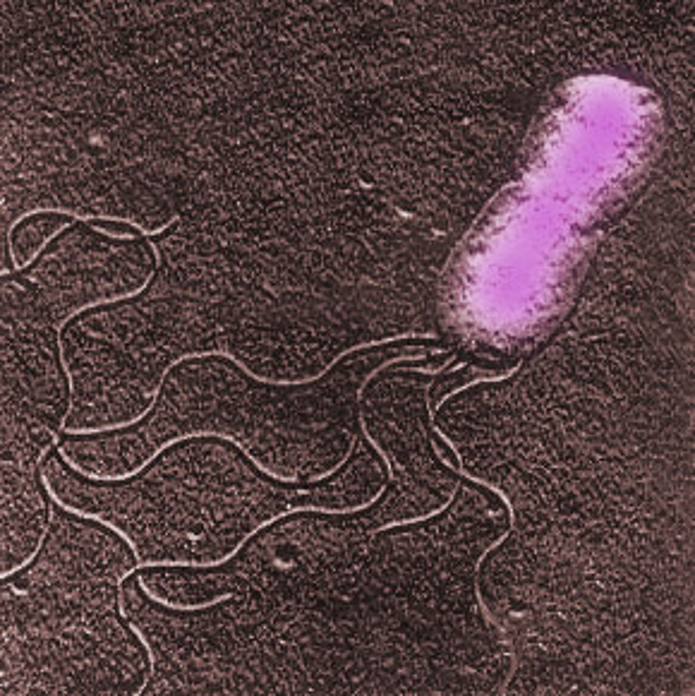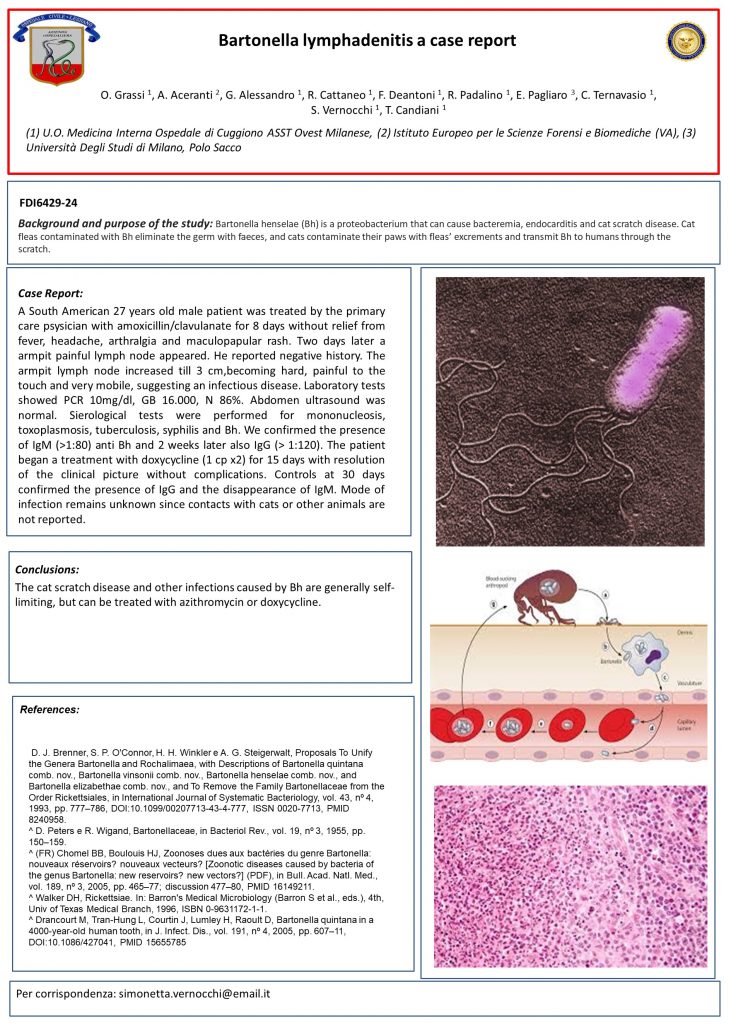Bartonellosis is a group of infectious diseases caused by bacteria of the genus Bartonella, facultative intracellular Gram negative bacteria that usually live within red blood cells and endothelial cells.
Bacteria belonging to this group, previously classified as Rickettsiae, are responsible for four diseases in humans:
– Carrion’s disease, “composed” of Oroya fever (acute) and Peruvian wart (chronic) caused by Bartonella bacilliforme (vector Phlebotomus lutzomyia);
– cat scratch disease caused by Bartonella henselae;
– quintane (or trench) fever caused by Bartonella quintana;
– bacterial angiomatosis and hepatic peliosis caused by Bartonella henselae or Bartonella quintana.
In detail, Bartonella henselae causes cat scratch disease in humans, a very rare disease transmitted through the scratch or bite of a cat infected with the bacterium itself. Usually the cat becomes infected through the bite of a flea; then it scratches or licks itself, contaminating its mouth and nails, through which the disease is transmitted to man.
Background and purpose of the study: Bartonella henselae (Bh) is a proteobacterium that can cause bacteremia, endocarditis and cat scratch disease. Cat fleas contaminated with Bh eliminate the germ with faeces, and cats contaminate their paws with fleas’ excrements and transmit Bh to humans through the scratch.
Case Report: A South American 27 years old male patient was treated by the primary care psysician with amoxicillin/clavulanate for 8 days without relief from fever, headache, arthralgia and maculopapular rash. Two days later a armpit painful lymph node appeared. He reported negative history. The armpit lymph node increased till 3 cm,becoming hard, painful to the touch and very mobile, suggesting an infectious disease. Laboratory tests showed PCR 10mg/dl, GB 16.000, N 86%. Abdomen ultrasound was normal. Sierological tests were performed for mononucleosis, toxoplasmosis, tuberculosis, syphilis and Bh. We confirmed the presence of IgM (>1:80) anti Bh and 2 weeks later also IgG (> 1:120). The patient began a treatment with doxycycline (1 cp x2) for 15 days with resolution of the clinical picture without complications. Controls at 30 days confirmed the presence of IgG and the disappearance of IgM. Mode of infection remains unknown since contacts with cats or other animals are not reported.
Conclusions: The cat scratch disease and other infections caused by Bh are generally self-limiting, but can be treated with azithromycin or doxycycline.

Authors: O. Grassi, A. Aceranti, G. Alessandro, R. Cattaneo, F. Deantoni, R. Padalino, E. Pagliaro, C. Ternavasio, S. Vernocchi, T. Candiani
Published: Italian Journal of Medicine Sept 2016
Presented: Poster FDI6924-29 at the FADOI Italian Congress of Medicine 2016


